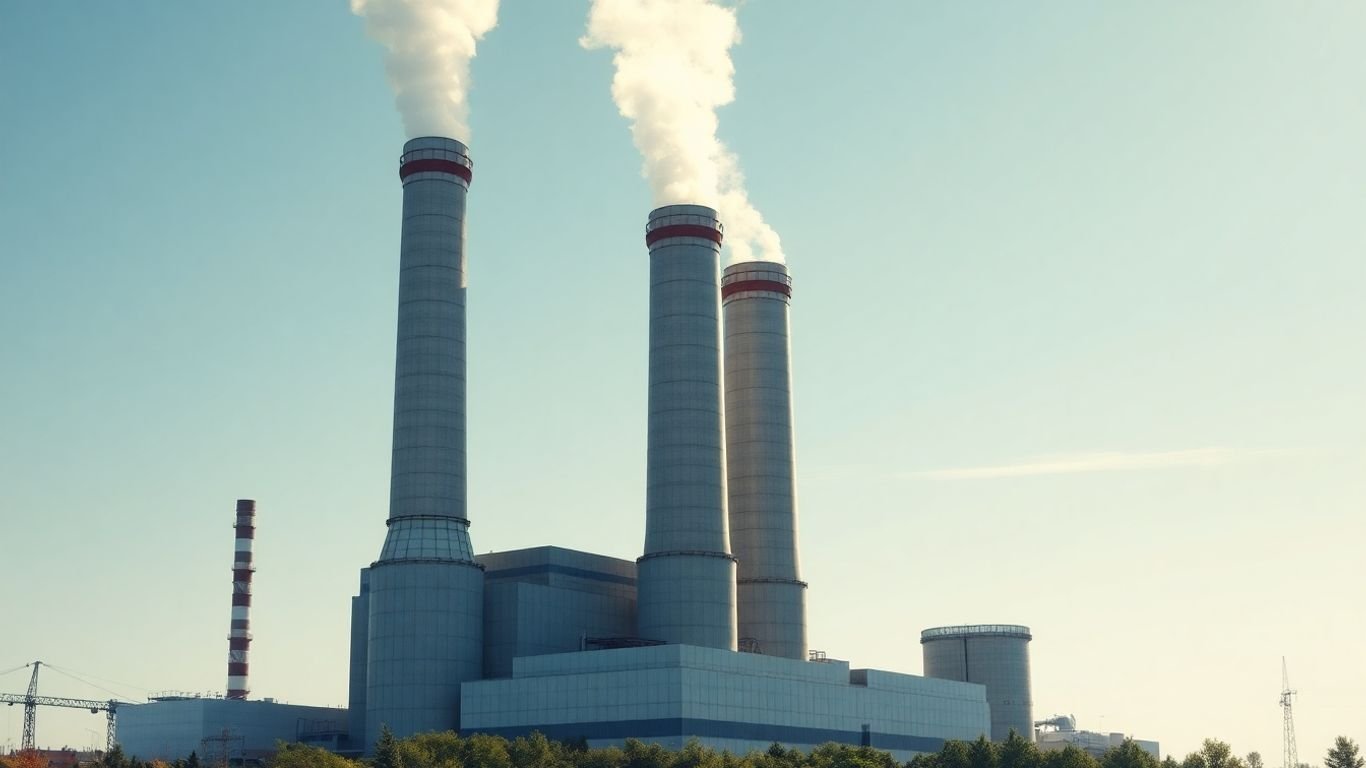Waste to Energy Incinerator Technology: Innovations and Future Trends

So, you know how we’re always talking about throwing stuff away? Well, what if I told you that ‘stuff’ could actually be turned into power? It sounds wild, but that’s exactly what Waste to Energy (WtE) technology is all about. It’s like giving our trash a second life, not just to get rid of it, but to actually use it to generate energy. It’s a pretty neat idea, right? This whole field is getting more advanced all the time, with new ways to make it work better and be kinder to the planet. Let’s take a look at what’s happening and what might be next.
Key Takeaways
- Modern Waste to Energy (WtE) processes have evolved significantly from simple incineration to include advanced methods like gasification and pyrolysis, which offer more controlled energy conversion.
- Innovations such as artificial intelligence and sophisticated modeling are being used to make WtE plants more efficient and optimize energy production and emissions.
- New approaches like oxy-fuel combustion and carbon capture are being developed to significantly reduce the environmental impact, particularly greenhouse gas emissions, from WtE operations.
- Future trends in WtE point towards handling a wider variety of waste materials and integrating these technologies more closely with circular economy principles for better resource management.
- Economic and regulatory factors, including government incentives and public-private partnerships, are crucial for the wider adoption and successful implementation of Waste to Energy technologies.
Advancements in Waste to Energy Technologies
Waste-to-energy (WtE) technology has come a long way from just burning trash. We’ve seen a real shift from basic incineration to more sophisticated methods that not only generate power but also aim to be cleaner and more efficient. It’s like upgrading from an old flip phone to a modern smartphone – the core function is the same, but the capabilities are vastly different.
Evolution of Incineration Processes
Incineration, the oldest WtE method, has undergone significant upgrades. Early incinerators were often simple combustion chambers, but today’s advanced versions are much more controlled. They focus on optimizing the burning process to get the most energy out while minimizing harmful emissions. Think of it as fine-tuning an engine for better performance and fewer fumes.
- Improved combustion control: Modern incinerators use sophisticated systems to manage temperature and airflow, leading to more complete combustion.
- Better ash management: Processes have been developed to treat the ash produced, making it safer for disposal or even usable in construction materials.
- Integrated pollution control: Advanced filters and scrubbers are now standard, capturing pollutants before they are released into the atmosphere.
The journey of incineration shows a clear trend: moving from a basic disposal method to a more engineered process focused on energy recovery and environmental responsibility.
Emergence of Gasification and Pyrolysis
Beyond traditional incineration, gasification and pyrolysis have gained traction. These processes treat waste differently, offering alternative ways to extract energy. Gasification involves heating waste with a limited amount of oxygen to produce a synthetic gas (syngas), which can then be used to generate electricity or produce fuels. Pyrolysis, on the other hand, heats waste in the absence of oxygen, breaking it down into liquids, gases, and a solid residue called char. These methods can handle a wider range of waste types and often produce fewer direct emissions compared to older incineration techniques.
Biochemical Conversion Pathways
Another area of advancement is biochemical conversion. This approach uses biological processes, like anaerobic digestion, to break down organic waste. Microorganisms consume the waste in an oxygen-free environment, producing biogas (primarily methane and carbon dioxide) and digestate. Biogas can be used for heat and power generation, while the digestate can serve as a fertilizer. This pathway is particularly effective for biodegradable waste streams and aligns well with circular economy principles by producing valuable byproducts.
- Anaerobic Digestion (AD): Breaks down organic matter using microbes without oxygen.
- Fermentation: Converts sugars and starches into biofuels like ethanol.
- Composting: Aerobic decomposition of organic waste into nutrient-rich compost.
These biochemical methods are seen as a greener alternative for specific waste types, turning what would be landfill fodder into useful resources.
Innovations Driving Waste to Energy Efficiency
Waste-to-energy (WtE) is getting smarter, and it’s not just about burning trash anymore. We’re seeing some really cool tech pop up that makes these plants work better and produce more power with less fuss. It’s like upgrading from an old flip phone to the latest smartphone – everything just works smoother and does more.
Integration of Artificial Intelligence
Artificial intelligence (AI) is starting to play a big role in WtE. Think of it as having a super-smart assistant that can sort waste, figure out the best way to process it, and even predict when equipment might need maintenance. This means less waste goes to landfills, more energy gets produced, and the whole operation runs more smoothly. Studies show AI can cut down on how far waste has to be transported, saving money and time. It’s also helping to identify illegal dumping, which is a win for everyone.
- Smart sorting: AI-powered robots can identify and separate different types of waste much faster and more accurately than humans.
- Process optimization: Machine learning algorithms can adjust combustion or gasification parameters in real-time to maximize energy output and minimize emissions.
- Predictive maintenance: AI can analyze sensor data to predict equipment failures before they happen, reducing downtime.
- Logistics management: Optimizing collection routes and schedules to reduce fuel consumption and transportation costs.
AI is transforming WtE from a simple disposal method into a sophisticated resource management system. It’s about making data-driven decisions to get the most out of every piece of waste.
Optimizing Combustion with Advanced Modeling
Getting the most energy out of burning waste isn’t as simple as just lighting a fire. Advanced modeling techniques are helping engineers fine-tune the combustion process. These computer models can simulate what happens inside the furnace under different conditions, allowing operators to find the sweet spot for maximum efficiency and minimal pollution. This means burning waste more completely, extracting more heat, and reducing the formation of harmful byproducts. It’s a bit like a chef using precise temperature and timing to cook a perfect meal, rather than just throwing ingredients in a pan.
Enhanced Heat Recovery Systems
Once waste is burned and produces heat, the next step is to capture that heat effectively. Modern WtE plants are equipped with much better heat recovery systems. These systems are designed to grab as much thermal energy as possible from the combustion gases before they are released into the atmosphere. This captured heat is then used to generate steam, which drives turbines to produce electricity. Some advanced systems even use the heat for district heating, warming up homes and businesses nearby. It’s all about not letting any of that hard-won energy go to waste.
| Component | Traditional System | Advanced System | Improvement Factor |
|---|---|---|---|
| Boiler Efficiency | 75-80% | 85-90% | Up to 10% |
| Heat Exchanger Performance | Moderate | High | Significant |
| Steam Turbine Output | Standard | Optimized | Increased |
| District Heating Capture | Limited/None | Extensive | New Capability |
Reducing Environmental Impact of Waste to Energy

Dealing with waste is a big challenge, and turning it into energy, while useful, has its own set of environmental hurdles. The good news is that technology is constantly improving to make these processes cleaner. We’re seeing a lot of focus on cutting down on the bad stuff that gets released into the air and making sure the whole operation is as green as possible. This means looking at every step, from how the waste is handled before burning to what happens with the leftover ash.
Oxy-Fuel Combustion for Emission Reduction
Traditional incineration often uses air, which is mostly nitrogen. When you burn waste with air at high temperatures, this nitrogen can react to form nitrogen oxides (NOx), which are a major air pollutant. Oxy-fuel combustion changes this by using pure oxygen instead of air. This significantly reduces the amount of nitrogen in the system, leading to much lower NOx emissions. It also means the flue gas is more concentrated in CO2, which can make capturing that carbon dioxide easier if that’s a goal. Think of it like this: less nitrogen means fewer unwanted reactions.
Carbon Capture and Storage Integration
Even with cleaner burning, some greenhouse gases are still produced. Carbon capture and storage (CCS) is a way to deal with this. The idea is to catch the CO2 produced during the waste-to-energy process before it gets released into the atmosphere. This captured CO2 can then be stored underground or potentially used for other industrial purposes. It’s a complex technology, but it’s becoming more important as we try to meet climate goals. Integrating CCS into waste-to-energy plants is a big step towards making them carbon-neutral or even carbon-negative in the future. This is a key part of making waste-to-energy a more sustainable option for waste management.
Minimizing NOx and Other Pollutants
Beyond NOx, incinerators can also release other pollutants like dioxins, furans, and heavy metals. Modern plants use a multi-stage approach to tackle these. This often involves:
- Advanced Flue Gas Cleaning: This includes systems like scrubbers that use water or chemical solutions to remove acidic gases, and baghouses or electrostatic precipitators to capture fine particulate matter.
- Selective Catalytic Reduction (SCR) or Non-Catalytic Reduction (SNCR): These technologies specifically target and break down NOx into harmless nitrogen and water.
- Careful Ash Management: The ash left over from incineration needs to be handled properly. Some ash can be recycled, while the rest needs to be disposed of in a way that prevents heavy metals from leaching into the environment.
The goal is to create a closed-loop system where the environmental footprint is as small as possible. This involves not just the burning process itself, but also the collection of waste, the treatment of emissions, and the final disposal or reuse of by-products. It’s about looking at the whole picture to minimize harm and maximize benefit.
Life cycle assessments (LCAs) are also becoming a standard tool to understand the full environmental impact of these facilities, from the initial construction to the final disposal of any residual waste. By analyzing these factors, operators can make informed decisions to optimize processes and reduce their carbon footprint, contributing to a more sustainable approach to energy generation from waste.
Future Trends in Waste to Energy

Looking ahead, the world of turning trash into treasure is getting even more interesting. We’re not just talking about burning garbage anymore; the future holds some pretty neat advancements that could make Waste-to-Energy (WtE) processes even better for the planet and our power needs.
Expanding Feedstock Versatility
One big area of growth is the ability of WtE plants to handle all sorts of different waste. Right now, some plants are picky about what they can process. But the future is looking at technologies that can take a wider mix of materials, including things that might have been hard to deal with before. This means less waste ends up in landfills, and more of it can be used to create energy.
- Plastics: Developing methods to break down mixed plastics more effectively.
- Biomass: Better integration of agricultural and forestry waste.
- Industrial Byproducts: Finding ways to safely process specific industrial waste streams.
Synergies with Circular Economy Principles
The idea of a circular economy – where we reuse and recycle as much as possible – is really taking hold. WtE is fitting right into this. Instead of just getting rid of waste, we’re seeing it as a resource. This means WtE plants will work more closely with recycling efforts, and the byproducts from WtE processes might even be used in other industries. It’s all about keeping materials in use for as long as possible.
The goal is to move away from a linear ‘take-make-dispose’ model towards a system where waste is minimized, and resources are kept in circulation, with WtE playing a key role in managing residual materials.
Development of Novel Waste Treatment Methods
Beyond just burning, new ways to treat waste are popping up. Gasification and pyrolysis, which turn waste into gases or liquids that can then be used for energy, are getting a lot of attention. These methods can be cleaner and more efficient than traditional incineration, and they can produce valuable byproducts too.
Here’s a quick look at some of these methods:
| Technology | Primary Output(s) | Key Advantage |
|---|---|---|
| Gasification | Syngas | Produces a clean fuel gas for energy generation. |
| Pyrolysis | Bio-oil, Syngas | Can handle a wide range of waste, produces liquid fuel. |
| Biochemical Conversion | Biogas, Ethanol | Uses organic waste, produces renewable fuels. |
These advanced methods are key to unlocking more energy from waste while reducing environmental impact. It’s an exciting time for WtE, and we’re likely to see some big changes in how we manage our waste in the coming years.
Economic and Regulatory Landscape for Waste to Energy
Getting waste-to-energy (WtE) projects off the ground involves a complex mix of financial considerations and government rules. It’s not just about the technology; it’s about making the numbers work and fitting into the legal framework. This often means navigating a landscape where economic incentives and strict regulations go hand-in-hand.
Incentives for Technology Adoption
Governments and financial bodies often use various tools to encourage the adoption of WtE technologies. These can include direct subsidies, tax breaks, or feed-in tariffs that guarantee a certain price for the energy produced. These financial nudges help offset the high upfront costs associated with building and operating modern WtE facilities. Without them, the economic case might not be strong enough, especially when compared to traditional waste disposal methods. It’s also about making sure that the environmental benefits, like reducing landfill volume and cutting greenhouse gas emissions, are recognized financially. For instance, some regions offer economic incentives that directly penalize waste generation, making WtE a more attractive alternative.
Public-Private Partnerships
Many successful WtE projects are the result of collaboration between public entities and private companies. These partnerships can help share the risks and rewards, bringing together the public sector’s understanding of community needs and regulatory requirements with the private sector’s technical expertise and financial muscle. This model can be particularly effective in developing countries where municipal budgets might be strained. It allows for the development of large-scale infrastructure that benefits everyone.
Addressing Investment Challenges
Securing investment for WtE projects isn’t always straightforward. There’s often uncertainty about the long-term availability and composition of waste feedstock, which can make investors hesitant. Additionally, the initial capital expenditure is substantial. Projects need to demonstrate a clear path to profitability, considering operational costs, energy prices, and the revenue from waste tipping fees. Evaluating the technical performance and economic viability together is key to attracting the necessary capital. This includes looking at:
- The efficiency of the chosen conversion technology.
- The projected lifespan and operational timeline of the facility.
- The potential for generating revenue from by-products.
- The overall cost-effectiveness compared to other waste management options.
The economic feasibility of waste-to-energy technologies is heavily influenced by local conditions, including waste characteristics and available infrastructure. A one-size-fits-all approach rarely works, and careful techno-economic analysis is required for each specific project to ensure both financial viability and environmental responsibility. This includes understanding the full supply chain, from waste collection to final disposal of any residual materials.
Regulatory frameworks play a massive role here too. Stringent environmental standards, while necessary for public health and safety, can add to project costs. However, they also drive innovation in cleaner WtE technologies. Finding the right balance between environmental protection and economic practicality is an ongoing challenge for policymakers and project developers alike. This balance is critical for the sustainable growth of the waste-to-energy sector.
Wrapping It Up: The Future of Trash Power
So, where does all this leave us with waste-to-energy? It’s pretty clear that turning trash into power isn’t just a niche idea anymore. We’re seeing some really smart upgrades happening, like making gasification even better and cleaner, and even figuring out how to capture the carbon that comes off. Plus, AI is starting to play a role, helping plants run smoother and smarter. It’s not just about burning garbage; it’s about using advanced tech to get the most energy out of it while being kinder to the planet. While there are still hurdles, like making sure these systems are affordable and work everywhere, the direction is definitely forward. We’re moving towards a future where what we throw away could be a key part of our energy mix, helping us manage waste and power our lives at the same time.
Frequently Asked Questions
What is Waste-to-Energy (WtE)?
Waste-to-Energy, or WtE, is a way to turn trash into useful energy, like electricity or heat. Instead of just throwing garbage away, we use special technologies to burn it or break it down, and that process creates power. It’s like getting a second life out of things we no longer need.
How is waste turned into energy?
There are a few main ways! Incineration is like controlled burning at very high temperatures, which makes steam to spin turbines for electricity. Gasification and pyrolysis heat waste with little or no oxygen to create gases or liquids that can be used for fuel. Biochemical methods, like anaerobic digestion, use tiny organisms to break down organic waste and produce biogas.
Are Waste-to-Energy plants bad for the environment?
Modern WtE plants are much cleaner than older ones. They have advanced filters and systems to control pollution, like reducing harmful gases and particles. Some newer technologies, like oxy-fuel combustion, can even capture carbon dioxide, which is a greenhouse gas, making the process even better for the environment.
What is gasification and how is it different from burning?
Gasification is like a high-tech way to ‘cook’ waste. Instead of burning it with lots of air, it’s heated with very little oxygen. This turns the waste into a gas called ‘syngas’, which can then be used to make energy. It’s a cleaner process than regular burning and can handle different types of waste.
How does Artificial Intelligence (AI) help in Waste-to-Energy?
AI is like giving WtE plants a super-smart brain! It can help sort waste more accurately, figure out the best way to burn or process it for maximum energy, and keep a close eye on emissions to make sure everything is running cleanly and efficiently. It makes the whole process smarter and more effective.
What are the future plans for Waste-to-Energy technology?
The future looks exciting! We’re seeing more advanced technologies that can handle even more types of waste. There’s a big focus on making these plants super efficient and even cleaner, possibly by capturing carbon. Plus, WtE is becoming a key part of the ‘circular economy,’ where we try to reuse and recycle as much as possible, making waste a valuable resource.






